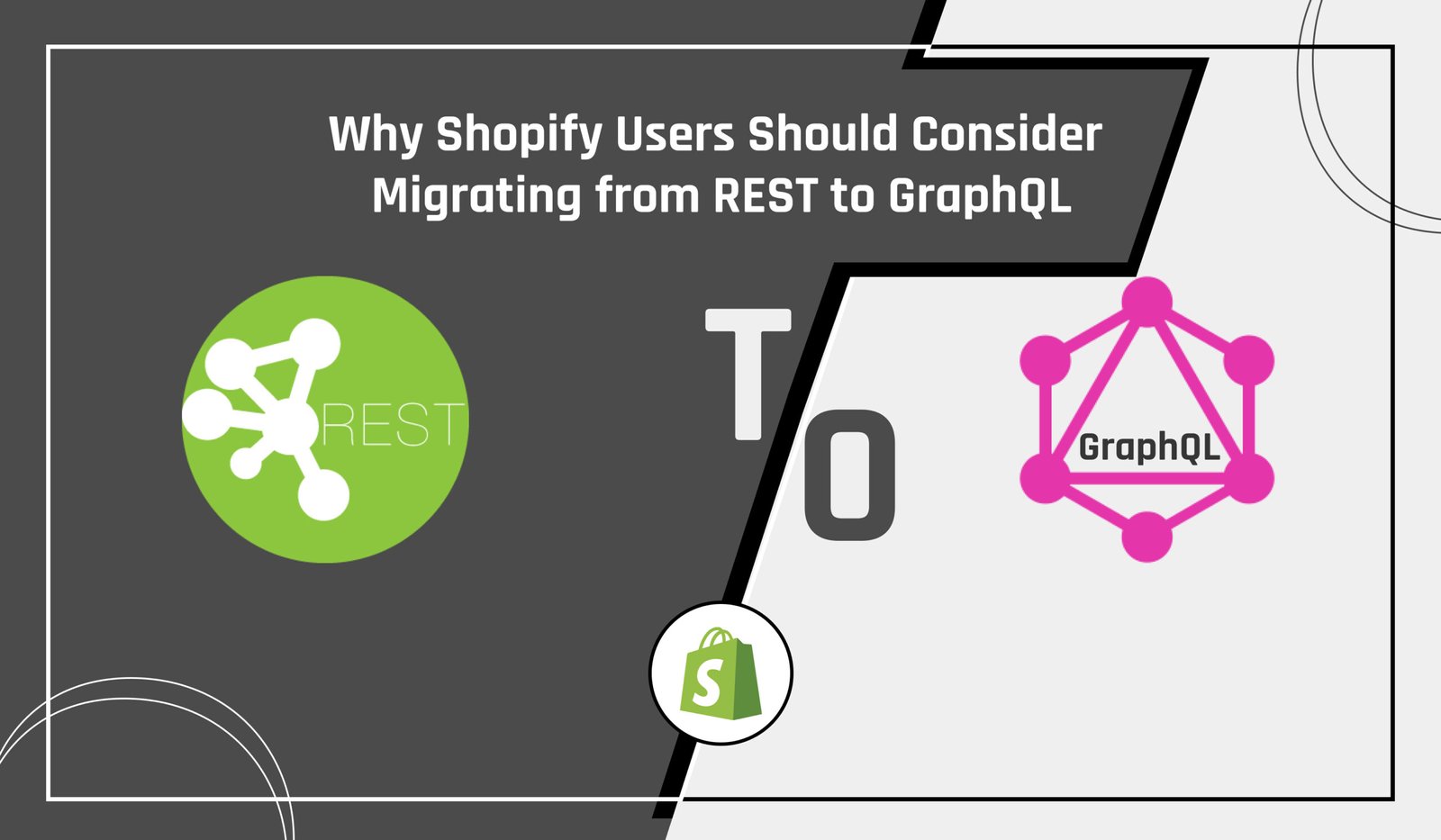
As Shopify store owners continue to innovate, exploring more efficient ways to handle data is important. Migrating from REST to GraphQL in Shopify is one such move that can dramatically enhance your store’s performance. In this beginner’s guide, we’ll explain why transitioning from REST to GraphQL could be a game-changer for your Shopify store.
Introduction to REST and GraphQL: What’s the Difference?
Before we discuss the reasons to migrate, let’s first understand the basics of REST and GraphQL.
REST (Representational State Transfer) is a widely used architectural style for creating web services. It relies on fixed endpoints and typically returns full sets of data, even if you only need a small portion of it. This can sometimes lead to inefficiency when fetching data.
GraphQL, on the other hand, is a more modern query language for APIs. Instead of relying on multiple endpoints, it uses a single endpoint to retrieve exactly the data you need, nothing more and nothing less.Why does this matter? Well, as we’ll see, GraphQL’s flexibility offers several advantages that can improve your Shopify store’s speed and performance.
Why Shopify Users Should Care About Migrating from REST to GraphQL
You might be wondering why this switch matters for your Shopify store. The truth is that how your store handles API requests can significantly affect its performance, especially as it scales.
With REST, every API request hits a specific endpoint and retrieves all available data. This can slow down operations, especially when your store needs only a fraction of the information being sent.GraphQL, by contrast, allows you to request only the data you need. It simplifies the process, making it more efficient for larger Shopify stores or those with complex data needs.
For store owners who want to offer a better customer experience and improve site performance, Shopify migrating from REST to GraphQL is a decision worth considering.
Better Performance with GraphQL: How It Optimizes API Requests
One of the most compelling reasons to migrate from REST to GraphQL in Shopify is performance improvement. Here’s how it works.
REST APIs often return large datasets even when you don’t need all the information. This means you might end up fetching unnecessary data, which can slow down your store’s load times.
GraphQL, on the other hand, is highly efficient. Since you can request only the specific data your application needs, it reduces bandwidth usage and response times. Faster API responses directly translate to quicker Shopify storefronts, resulting in a better user experience for your customers.
As Shopify users, migrating from REST to GraphQL can significantly boost your store’s speed and performance, which is crucial in today’s competitive eCommerce environment.
Simplified Development: How GraphQL Makes Coding Easier
If you or your development team are working with Shopify’s APIs regularly, you’ll find that GraphQL simplifies many tasks.
In REST, developers often need to manage multiple endpoints and handle various HTTP methods (like GET, POST, DELETE). This complexity can increase the time and effort needed to develop and maintain integrations with Shopify.
GraphQL, on the other hand, allows developers to use a single endpoint for all queries. This simplifies the structure and eliminates the need for multiple calls, reducing the possibility of errors and making the development process faster and more efficient.
For Shopify users, migrating from REST to GraphQL can save time and resources, enabling developers to build more powerful and streamlined applications.
Enhanced Flexibility: Custom Data Requests with GraphQL
A key benefit of GraphQL is its flexibility. Shopify users can tailor data queries to meet specific needs, which is something REST doesn’t easily offer.
With REST, you are limited to the pre-defined endpoints and the data they return. This can sometimes mean over-fetching or under-fetching data. For example, if you only need the product name and price but the API returns all product details, it adds unnecessary overhead.
In GraphQL, you have the freedom to request only the exact data you need. This is particularly beneficial for stores with complex or unique data requirements. Whether you’re pulling order information, customer details, or inventory data, GraphQL gives you the power to specify exactly what you need.
Shopify migrating from REST to GraphQL means more precise data retrieval, reducing both load times and server resources.
Future-Proofing Your Shopify Store with GraphQL
As Shopify continues to grow and develop, it’s clear that GraphQL will play a major role in the platform’s future.
Shopify has already been moving its own APIs towards GraphQL, introducing new features and tools that leverage its power. As the eCommerce landscape evolves, APIs will need to be faster, more flexible, and easier to work with. GraphQL offers exactly that.
By migrating from REST to GraphQL, Shopify users are future-proofing their stores. Not only will this transition improve current performance and flexibility, but it will also ensure your store is ready for upcoming innovations.
Conclusion: Make the Switch to GraphQL for a Faster, More Efficient Shopify Store
Migrating from REST to GraphQL in Shopify isn’t just a technical upgrade—it’s a strategic decision that can improve your store’s performance, development workflow, and flexibility.
By embracing GraphQL, you’ll benefit from faster load times, easier development, and the ability to scale your store’s API usage more efficiently. For Shopify users, this migration is a step toward creating a more streamlined, customer-friendly online shopping experience.


